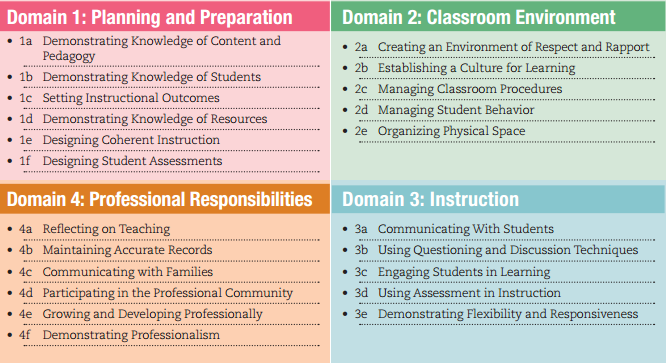Districts across the nation are determining teacher effectiveness in part using a rubric created by Charlotte Danielson. The rubric contains four domains and 22 components. You can download the full evaluation instrument here. The framework below outlines exactly what administrators will look for when evaluating teacher practice.

With four domains and 22 components, teachers might want to come up with a way to beautifully showcase and celebrate the work they are doing. To do that teachers must be familiar with what they are being asked to showcase. Teachers are responsible for demonstrating effectiveness through evidence and artifacts. In places like New York City, up to eight artifacts may be used to demonstrate effectiveness. They can only be used in domains one and four. Teachers should keep in mind however, that one artifact may demonstrate effectiveness in multiple components. For example, if you have a class Facebook page that you use to interact with students and their families, that Facebook page can serve as an artifact for both 4c - Communicating with Families as well as 1b - Demonstrating Knowledge of Students. This means, that should a teacher choose, they can use eight artifacts to demonstrate 12 components.
For domains two and three teachers must provide evidence of effectiveness. This evidence is generally collected during formal or informal classroom observations. Teachers also have the option to choose to videotape a lesson for their formal evaluation to provide evidence. It might be helpful for teachers to document, and have readily accessible, examples indicating how they are effectively engaging in each component.
Here are some ideas for showcasing and celebrating work using the Danielson Framework.
I want more »






0 comments:
Post a Comment